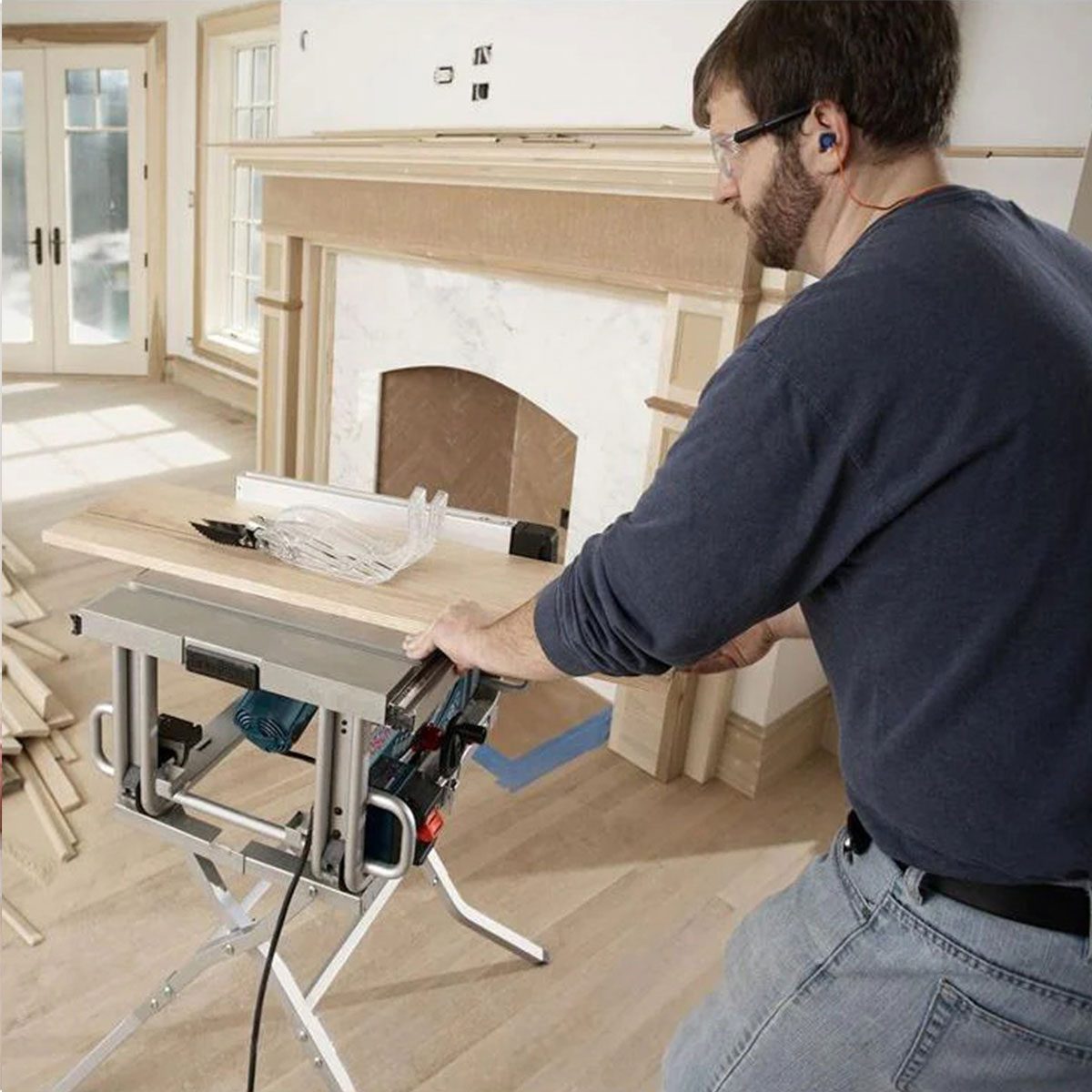
Buying a Table Saw
A table saw is essential equipment in the wood shop and on building sites. It isn’t the only tool that can rip wood to precise dimensions, slice and dice wood paneling, cut bevels and grooves and crosscut compound angles, but it’s the best choice for all those jobs.
A hand tool like a circular saw can also handle these tasks, but not with the accuracy of a table saw. And accuracy is key for a quality finished product.
The stationary table saw (AKA a shop saw) you find in a wood shop is an extremely powerful and precise tool. But you don’t need all that power and precision for most home improvement projects, and you can’t move a stationary saw to a jobsite. Most table saws you see for home or jobsite use are portable.
Portable saws come in two types. Benchtop saws are the smallest and easiest to carry around, and true to their name can be set up on a work bench. They often come with removable stands. Contractor saws have bigger tables and more power, and are usually outfitted with wheels.
Whether you’re looking for a stationary or portable saw, here are some important points to consider:
- Power draw: Powerful motors draw between two and four amps of current, which can be enough to blow a breaker in your fuse box. Less powerful saws may not cut as cleanly or precisely but are fine for utility use.
- Size: Table width can vary from 25 to 50 or more inches. Small tables save space and are easier to transport, but they limit the width of the material you can cut.
- Weight: A convenient saw is lightweight and easy to transport, while an accurate saw is heavy enough to remain in place while you’re working. Look for a compromise that suits your needs.
- Stability: Contractor saws come with stands, and so do some benchtop models, The stand should be stable when placed on a flat surface and easy to set up. Avoid ones that wiggle.
- Fence: This must be sturdy and dead flat for accuracy. It should also be easy to adjust with an easy-to-read distance gauge, and lock securely.
- Miter gauge: The miter gauge slides back and forth along the table top and lets you make angled crosscuts. It should have a secure locking clamp and well-graduated angle scale that’s easy to read. It should also be sturdy.
- Blade adjustments: Table saws have a crank to set blade height, and the entire crank pivots to set blade angle. Both adjustments should be smooth (not sticky) and lock securely, and the angle scale should be easy to read.
Did you miss our previous article...
https://rsssuperfeeds.com/life-hacks/9-best-corded-drills-for-2022






